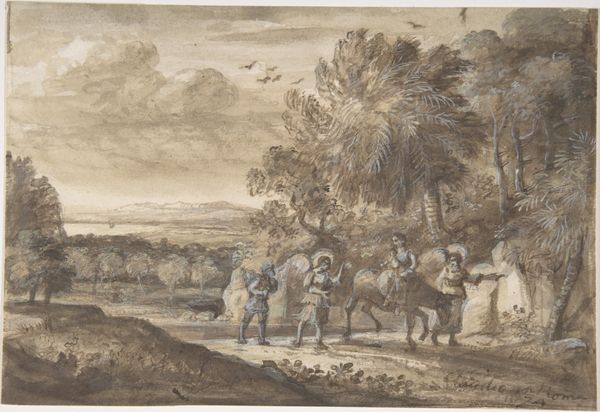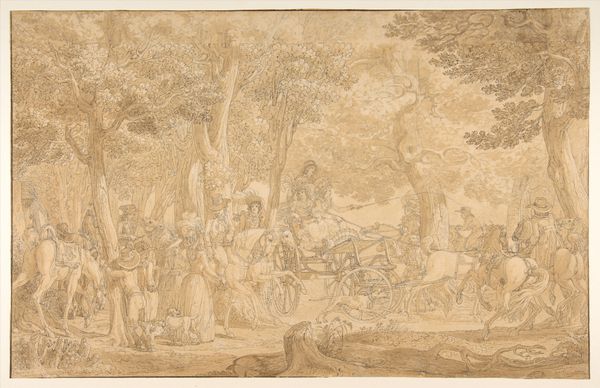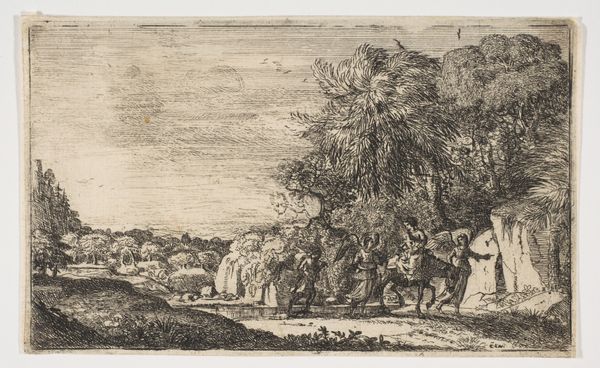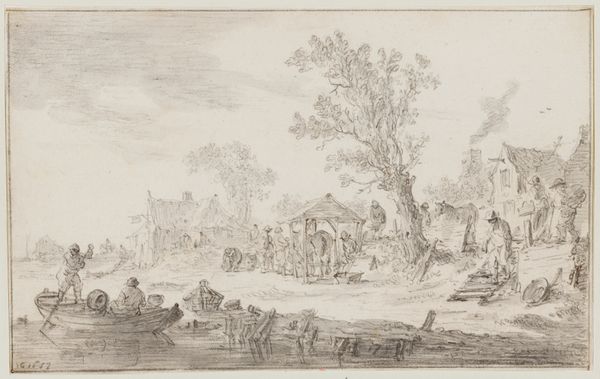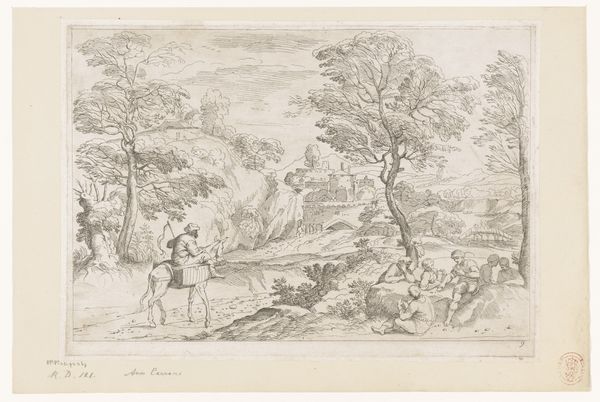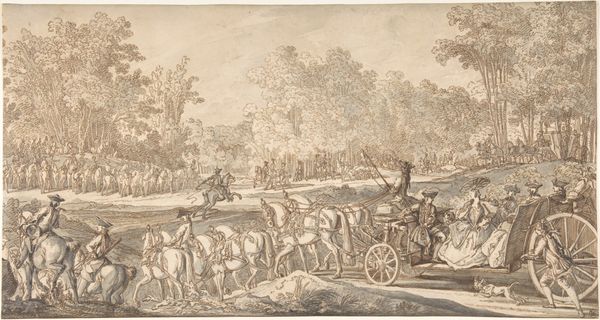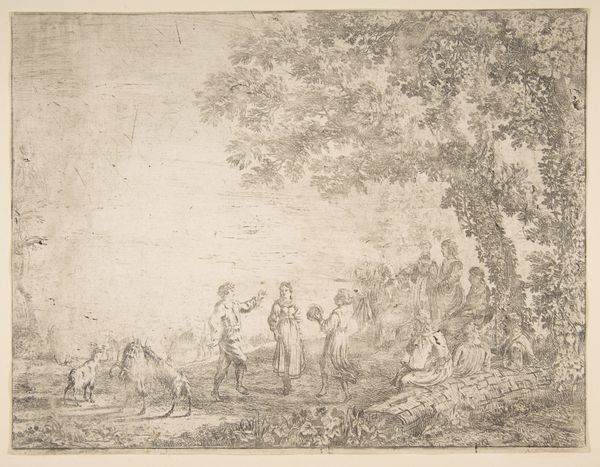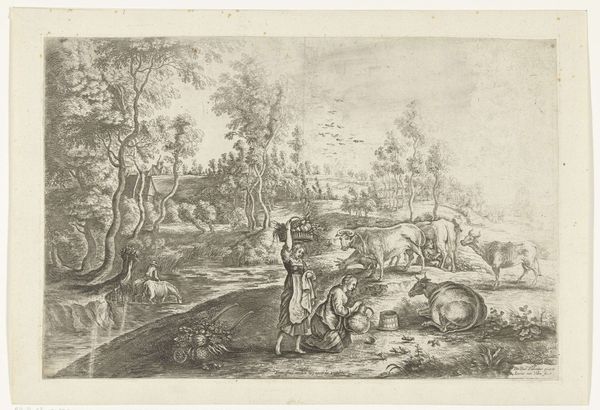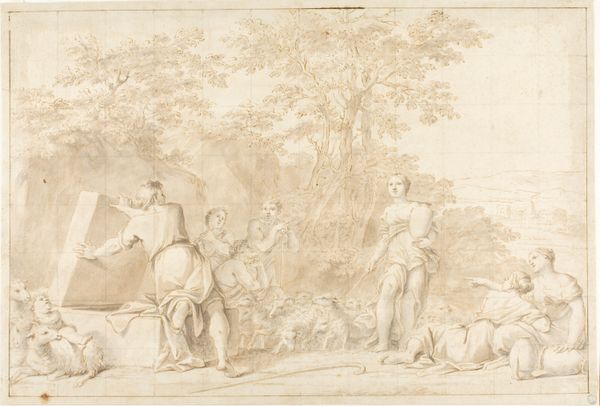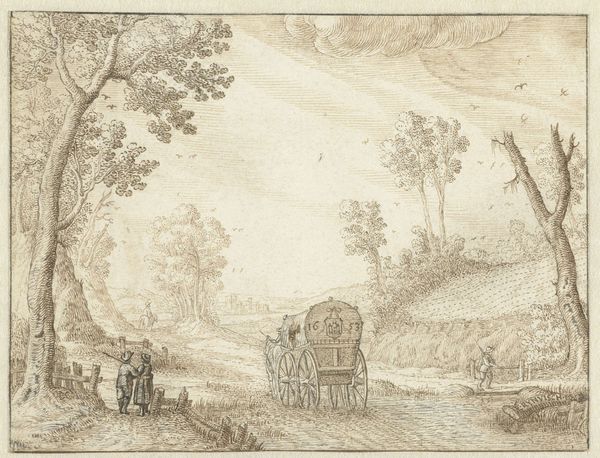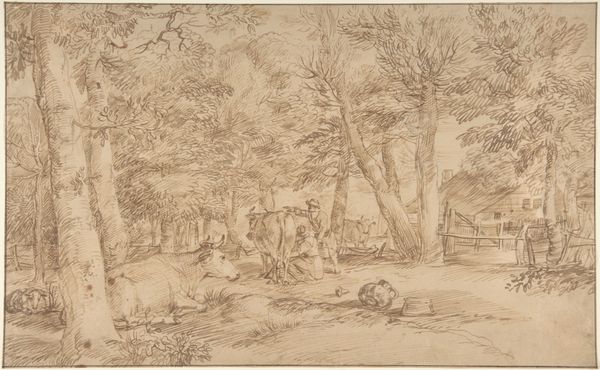
Voornaam gezelschap in een koets, gevolgd door bedienden met valken en jachthonden 1583
0:00
0:00
drawing, ink
#
drawing
#
landscape
#
mannerism
#
ink
#
genre-painting
Dimensions: height 218 mm, width 324 mm
Copyright: Rijks Museum: Open Domain
Editor: Here we have "A distinguished company in a carriage, followed by servants with falcons and hunting dogs" by Sebastiaen Vrancx, created in 1583. It's an ink drawing. The scene feels very much of its time, with the stylish dress and hunting party. What strikes you most when you look at this? Curator: Immediately, I see how Vrancx utilizes very specific iconography of wealth and leisure. Consider the falconry. It’s not simply about hunting, it’s a symbol deeply rooted in aristocratic privilege. What does the inclusion of specific animals suggest to you? Editor: Well, the dogs and falcons clearly indicate a hunt, but you're right, it speaks to more than just acquiring food. It is more like the display of their dominance. Curator: Precisely. Each element -- the carriage itself, the dress of the figures, the inclusion of specific breeds of dogs -- carries semiotic weight. What emotional associations does that visual language evoke in the viewer? Editor: An emotional detachment perhaps, these visual components serve to represent how high society, shielded by customs and their place, existed quite independently from reality, I am also noticing that they seem separated from nature, moving through it in the comfort of their carriage. Curator: Excellent. Look, too, at how Vrancx employs line. Does the precision of line inform your understanding of the depicted world? Editor: It does, yes. The lines are confident, suggesting clarity of vision and perhaps even a certain… authority? Almost like these details tell me they have it all under control. Curator: This connects back to our initial point about aristocracy. The image creates cultural continuity by celebrating and visually codifying societal structure and luxury, almost solidifying class identity. Editor: I hadn’t thought about the link to identity that way, but I see it now. It’s interesting to realize that art is reflecting not only the aesthetic of the period but the cultural memory it wants to uphold. Thanks for pointing that out.
Comments
No comments
Be the first to comment and join the conversation on the ultimate creative platform.

